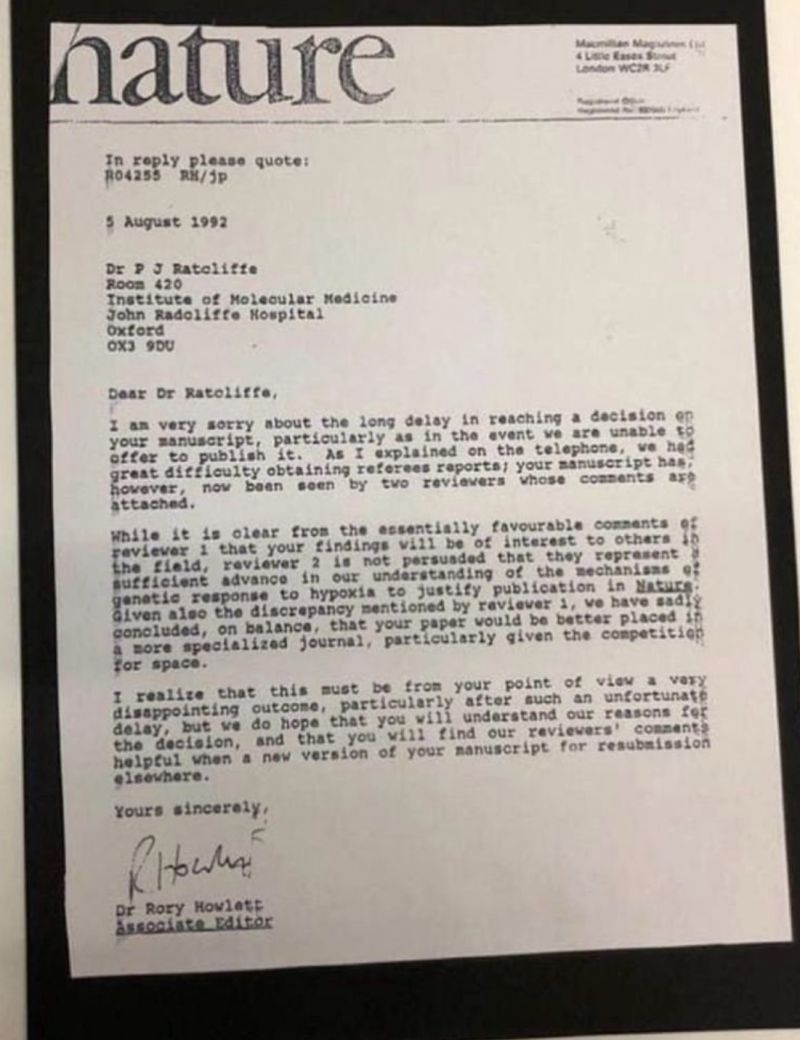
Gustavo Monnerat: The Rejection Letter That Became a Nobel Prize
Gustavo Monnerat, Deputy Editor at The Lancet, shared a a post on LinkedIn:
“The Rejection Letter That Became a Nobel Prize, and What It Teaches Us
You’ve probably seen this letter before.
In 1992, Nature rejected Peter Ratcliffe’s paper
27 years later, he won the Nobel Prize for the same discovery.
This story if often used as a reminder to never lose faith.
And yes, perseverance matters a lot.
But there’s another lesson here:
Even the best ideas can be missed if they aren’t clearly written, contextualized, and supported by data that communicates their novelty and significance.
Editors and reviewers don’t reject ideas, they reject what they can’t fully see or understand.
And in a world where scientific output grows exponentially, clarity has become a key part of scientific impact.
5 Ways to Help Editors and Reviewers See the Value of Your Work
- Novelty & Significance
Make the advance explicit: what’s new, why it matters, and how it moves the field forward. - Rigor & Transparency
Explain your methods so readers can trust and reproduce them. Clarity equals credibility. - Results & Data Storytelling
Let figures speak. Highlight the key contrast or effect in seconds, reviewers scan, not dig. - Interpretation & Implications
Go beyond results. Explain why the finding changes understanding or practice. - Integration & Next Steps
Situate your work in the broader scientific conversation, and show where it leads next.”

Stay updated with Hemostasis Today.
-
Dec 19, 2025, 13:30PPTA Europe’s Holiday Message: Wishing Health, Rest, and Renewal for 2026
-
Dec 19, 2025, 13:22If You Were Reading a “Bible for Blood Donation Volunteers,” What’s the ONE Thing That Must Be in It?
-
Dec 19, 2025, 12:52Julia Owens: Stroke Remains One of the World’s Leading Causes of Death and Disability
-
Dec 19, 2025, 12:03Pradeep Natarajan: Our New Genetic Study of Aortic Stenosis in ~3M
-
Dec 19, 2025, 11:47ESO Blog: Anna Gardin on Stroke Risk in the Era of Climate Extremes
-
Dec 19, 2025, 10:51Sarah Elkourashy Presents Insights on Caplacizumab for TTP at ASH25
-
Dec 19, 2025, 10:08Camilla Lombardi Shares an EHC Nutrition Guide for People with Bleeding Disorders
-
Dec 19, 2025, 09:56Danny Hsu Shares The ”I-WISh” Study by Nichola Cooper on ITP
-
Dec 19, 2025, 09:39Paul Bolaji: A Landmark Achievement -The Historic 1st Nigerian Stroke Leaders’ Summit 2025
